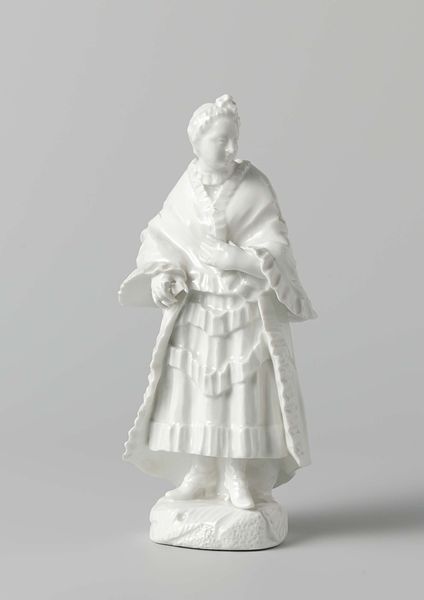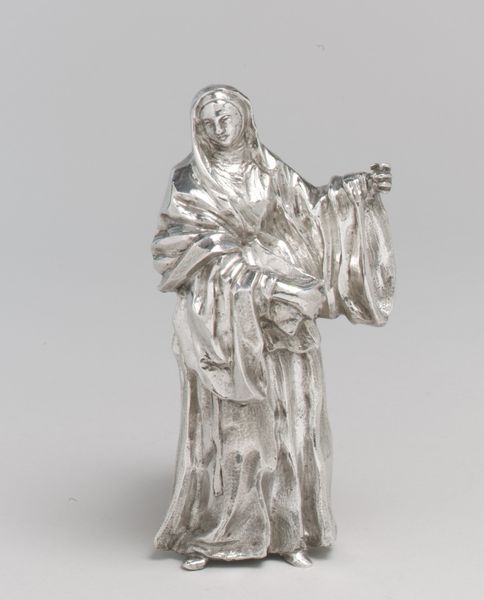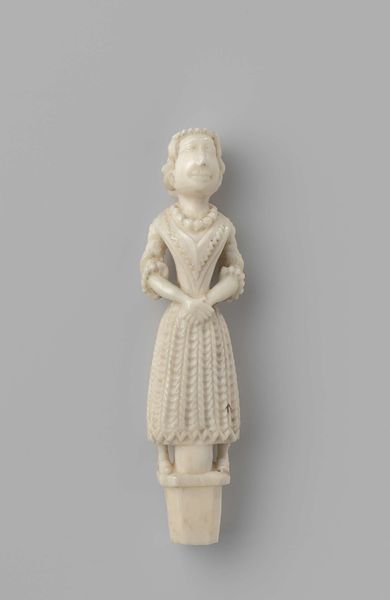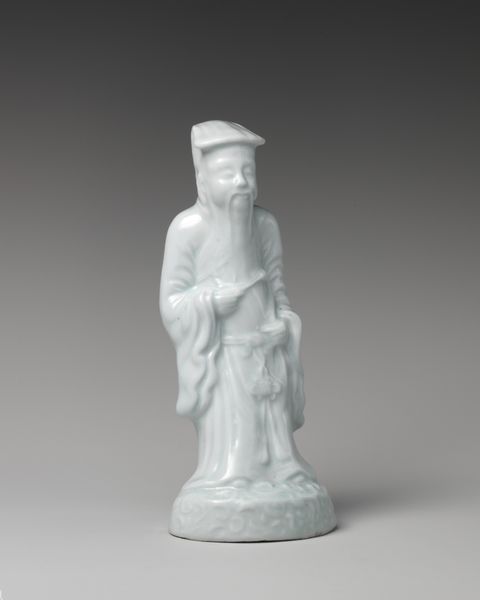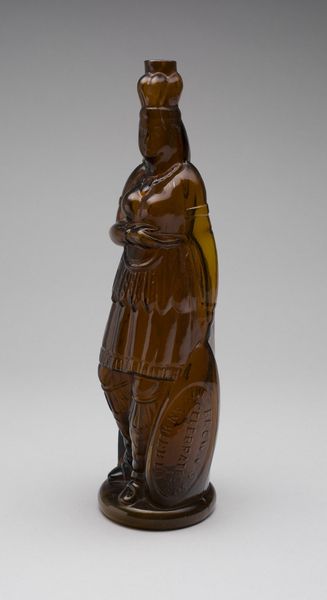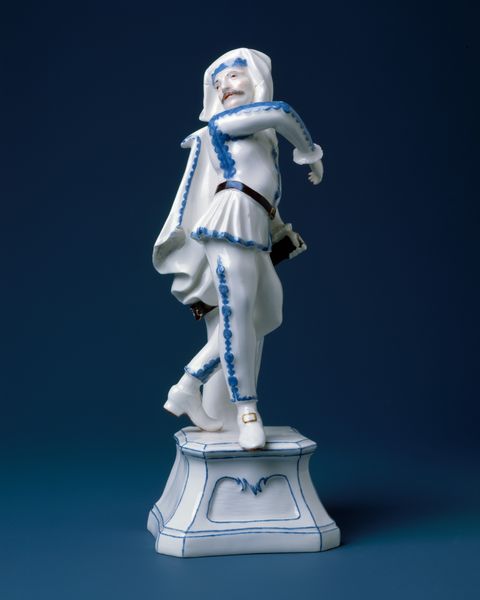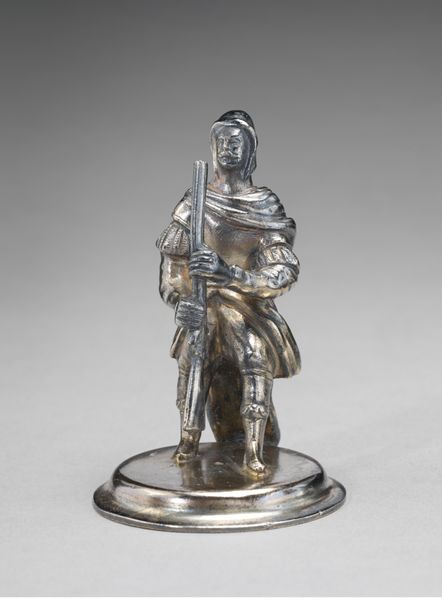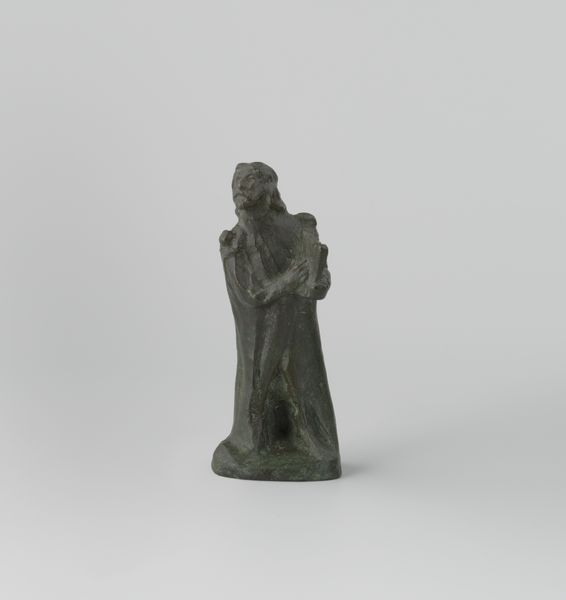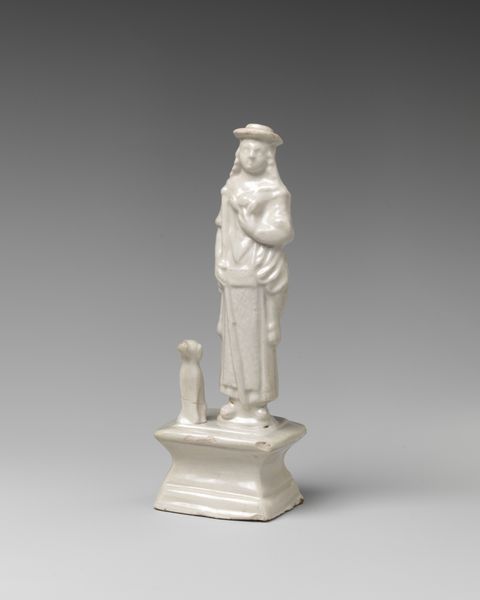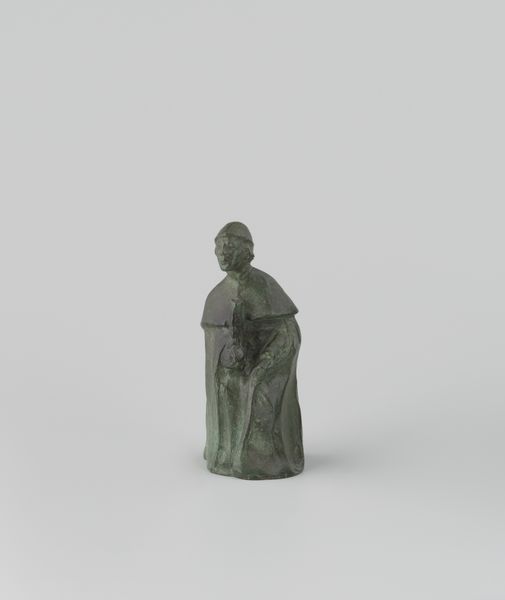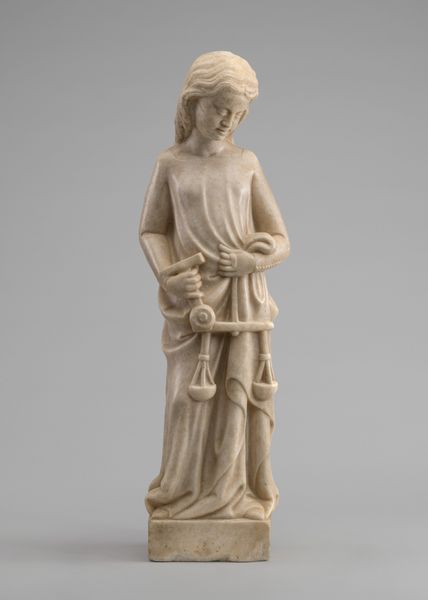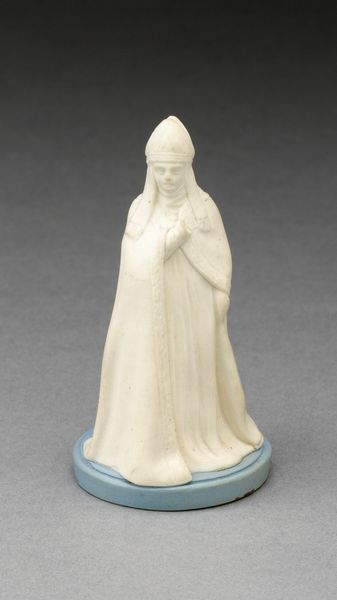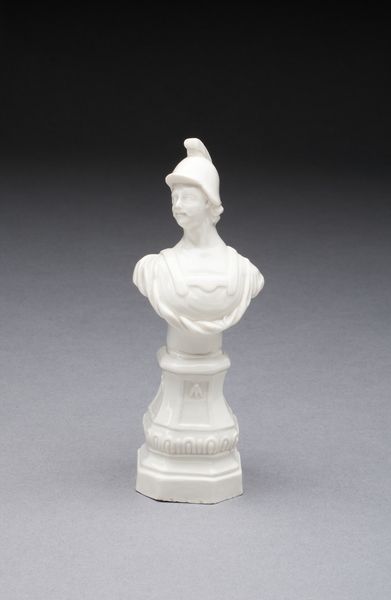
ceramic, sculpture
#
portrait
#
ceramic
#
figuration
#
sculpture
#
rococo
Dimensions: height 12 cm, width 6 cm
Copyright: Rijks Museum: Open Domain
Editor: Here we have an undecorated ceramic figure of a girl, dating from around 1755 to 1780. It’s surprisingly austere for its time, wouldn't you say? Rococo often leans towards extravagance. How do you interpret this choice of simple execution? Curator: That’s a great observation. While it aligns with the Rococo interest in everyday life, the lack of ornamentation is interesting. Rococo figurines were often mass-produced. What impact might this method have had? Editor: I imagine producing unglazed wares would have kept costs down, making art accessible to a wider range of people. Curator: Exactly. Cheaper production made these pieces more available to the rising middle class. This access also reshaped the culture around owning art; porcelain figures moved from strictly upper-class display pieces to emblems of domestic respectability. But why a girl, specifically? Editor: Maybe representing a demographic on the rise and/or celebrating women and the work that they do. Curator: A fitting conclusion, as these items were part of building modern expectations for the home, feminine accomplishments, and class distinctions in the eighteenth century. We need to think of the values attached to art, not just aesthetics. Editor: That puts it in perspective. I was so focused on the 'Rococo' tag. Now I see that it has much broader appeal to history enthusiasts as well!
Comments
No comments
Be the first to comment and join the conversation on the ultimate creative platform.
